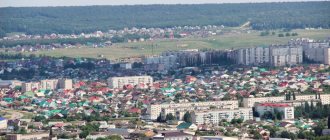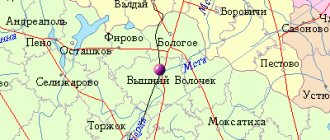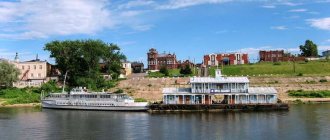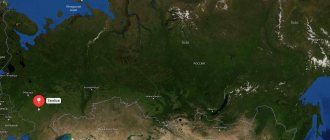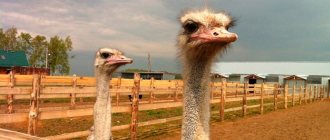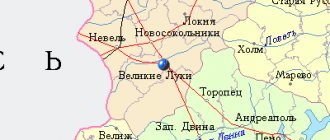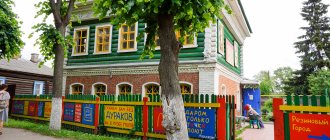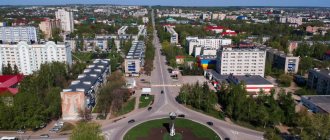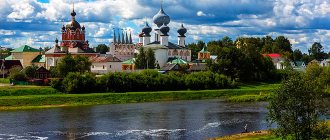Where is Orenburg located?
Orenburg (formerly Chkalov) is a city in the Orenburg region and is its administrative center.
Orenburg stands on the Ural River (also known as Yaik) at the confluence of the Sakmara River. Until 1959, it was believed that Orenburg was located right on the border between Europe and Asia; there is still a corresponding symbolic sign on the pedestrian bridge over the Ural River. By today's standards, the city belongs entirely to the European continent. In Orenburg, Yekaterinburg time is in effect (MSK+2), and the advance relative to Coordinated Universal Time is 5 hours (UTC+5).
Main attractions
Orenburg is a city where, having visited once, you want to come again. If a down scarf is a business card, then the bridge for pedestrians across the Urals is the most famous attraction.
The bridge was built in 1935, the wooden structure of which needed to be restored or repaired annually after the river flooded in the spring.
The metal bridge was built only 153 years later in the 20th century in 1982. You can cross the bridge from one bank located in Europe to the other bank, ending up in Asia.
Airport
In Orenburg there is a federal airport named after Yu.A. Gagarin (until recently it was called “Orenburg-Armada”.
The Orenburg airport mainly serves Russian airlines flying to various regions of Russia and neighboring countries. Year-round and daily flights depart to Moscow and St. Petersburg - these are the most popular destinations. Flights are operated at varying frequencies to Kazan, Ufa, Sochi, Orsk, Anapa, Samara, Simferopol and other Russian cities. During the tourist seasons, flights are operated from Orenburg to Antalya, Baku, Enfidha and other destinations.
Map
| Orenburg: maps |
Orenburg: photo from space (Google Maps) Orenburg: photo from space (Microsoft Virtual Earth)
| Orenburg. Nearest cities. Distances in km. on the map (in brackets along roads) + direction. Using the hyperlink in the distance , you can get the route (information courtesy of the AutoTransInfo website) | |||
| 1 | Nezhinka | 18 () | IN |
| 2 | Pervomaisky | 26 (32) | YU |
| 3 | Sakmara | 29 (32) | NE |
| 4 | Perevolotsky | 63 (65) | Z |
| 5 | Krasnokholm | 67 () | Z |
| 6 | Sol-Iletsk | 67 (75) | YU |
| 7 | Oktyabrskoe | 70 (65) | NE |
| 8 | Saraktash | 86 (105) | IN |
| 9 | Akbulak | 92 (123) | YU |
| 10 | Tulgan | 96 (120) | NE |
| 11 | Belyaevka | 99 (102) | SE |
| 12 | Novosergievka | 105 (104) | Z |
| 13 | Isyangulovo (Republic of Bashkortostan) | 111 (162) | NE |
| 14 | Alexandrovka | 112 (185) | NW |
| 15 | Ermolaevo (Republic of Bashkortostan) | 115 (121) | NE |
| 16 | Kumertau | 120 (129) | NE |
a brief description of
Located in the southern Urals, on the river. Ural, near the confluence of the river. Sakmara, 1478 km southeast of Moscow. Railway junction lines and highways.
The climate is sharply continental. Average temperatures in January are -16, July are +20. Precipitation is 300-450 mm per year.
Territory (sq. km): 917
Information about the city of Orenburg on the Russian Wikipedia site
Historical sketch
It was originally founded in 1735 as a fortress at the confluence of the river. Or in the river Yaik (modern name - Ural), hence the name Orenburg. In 1740, the city was founded in a new location - on Krasnaya Gora (downstream of the Yaik River) with the same name retained. The old city was called the Orsk Fortress (the modern city of Orsk). In 1743, the city was moved for the third time, to the west, to the site of the Berd fortress (founded in 1737). The city on Krasnaya Gora continued to exist under the name Krasnogorsk Fortress (now the village of Krasnogor, Saraktash district).
Orenburg is the “Orsk fortress”, although now it is located almost 300 km from the Or River. Hydronym Or from the Turkic or “ditch, ditch”, as well as “valley, ravine, channel, ravine”.
In the 18th - first half of the 19th centuries. Orenburg is the main fortress of the Orenburg border line (abolished in 1862).
Since 1744, the center of the Orenburg province and also the province, since 1781 - the center of the Orenburg region of the Ufa governorate, at the same time the residence of the head of the Orenburg region. In 1796-1802 center of the Orenburg province, since 1865 again a provincial center.
Since 1748, the military and administrative center of the Orenburg Cossack army.
From October 5, 1773 to March 23, 1774, it was besieged by the army of Emelyan Pugachev.
In 1856, in the district city of Orenburg, Orenburg province, there were 12 churches, 1676 houses, 688 shops.
A special feature of Orenburg as an administrative center was the expansion of its role into territories to which it did not belong. In 1850-81. Orenburg is the center of the General Government. Until 1868, there were institutions in charge of border affairs and the administration of the Kazakhs of the Small Zhuz. Since 1868, the seat of the governor of the created Turgai region.
Orenburg was a place of political exile; poets T.G. served part of their exile here. Shevchenko, A.N. Pleshcheev, composer A.A. Alyabyev.
Orenburg was a major center of trade between Russia and Kazakhstan and Central Asia. In Orenburg there were the Exchange Dvor (built in 1749-54) and Gostiny Dvor, border customs (abolished in 1868).
Industry (mainly flour milling, lard processing, tanning and oil pressing) began to develop with the construction of the Samara-Orenburg railway in 1877.
In 1905, the Orenburg-Tashkent railway was built and the main railway workshops were opened. The city becomes a major trade and distribution center for livestock and meat (city central slaughterhouses were opened in 1894, and the export of fresh and frozen meat began in 1880), the so-called. Siberian ghee, lard, leather, wool, goat down. The sawmill and woodworking industries are developing.
In 1920-25 Orenburg is the capital of the Kirghiz Autonomous Soviet Socialist Republic (since 1935 - the Kazakh SSR). In 1925, the capital was transferred to Kzyl-Orda, Orenburg became part of the RSFSR.
Since 1934, the center of the Orenburg region. In 1938-57. was called Chkalov after the pilot V.P. Chkalova (1904-38).
Municipal indicators
| Index | 1990 | 1999 | 2001 | 2003 | 2005 |
| Demography | |||||
| Number of births, per 1000 population | 14.2 | 9 | 10.1 | 10.8 | 10.5 |
| Number of deaths, per 1000 population | 9.3 | 12.5 | 13.3 | 13.3 | 13.4 |
| Natural increase (decrease), per 1000 population | 4.9 | -3.5 | -3.2 | -2.5 | -2.9 |
| Standard of living of the population and social sphere | |||||
| Average monthly nominal accrued wages, rub. | 0.285 | 1558 | 3410 | 5616 | 8262 |
| Average housing area per inhabitant (at the end of the year), sq.m. | 14.4 | 18.1 | 18.5 | 17.9 | 19.4 |
| Number of preschool institutions, pcs. | 217 | 135 | 130 | 125 | 125 |
| Number of children in preschool institutions, thousand people | 32.8 | 17.7 | 18 | 18.5 | 19.7 |
| Enrollment of children in preschool educational institutions (at the end of the year), as a percentage of the number of children of the corresponding age, % | 64.5 | 65.6 | |||
| Number of daytime educational institutions (at the beginning of the school year), pcs. | 92 | 104 | 107 | 103 | 104 |
| Number of students in daytime educational institutions, thousand people | 74.9 | 78.1 | 71.4 | 62.6 | 54.6 |
| Number of doctors, people. | 4620 | 5590 | 5539 | 5683 | 5546 |
| Number of nursing staff, people. | 9521 | 9036 | 9190 | 9089 | 9028 |
| Number of hospital institutions, pcs. | 31 | 31 | 29 | 27 | 26 |
| Number of hospital beds, thousand units | 10.2 | 9.3 | 9.3 | 9.5 | 9.3 |
| Number of medical outpatient clinics, pcs. | 65 | 69 | 73 | 88 | 97 |
| Capacity of medical outpatient clinics, visits per shift, thousand units. | 12.9 | 14.2 | 15 | 15.3 | 15.5 |
| Number of registered crimes, pcs. | 5910 | 15348 | 13048 | 11595 | 14825 |
| Persons who committed crimes were identified, persons. | 2809 | 7532 | 6825 | 4634 | 3633 |
| Economy, industry | |||||
| Number of enterprises and organizations (at the end of the year), pcs. | 965 | 10883 | 12561 | 14539 | 16244 |
| Number of operating enterprises by type of activity: mining (at the end of the year), pcs. | 23 | ||||
| Number of operating enterprises by type of activity: manufacturing (at the end of the year), pcs. | 228 | ||||
| Number of operating enterprises by type of activity production and distribution of electricity, gas and water (at the end of the year), pcs. | 57 | ||||
| Volume of shipped goods of own production by type of mining (in actual prices), million rubles. | 7844.6 | ||||
| Volume of shipped goods of own production by type of manufacturing (in actual prices), million rubles. | 20192.6 | ||||
| Volume of shipped goods of own production by type of production and distribution of electricity, gas and water (in actual current prices), million rubles. | 30436.4 | ||||
| Construction | |||||
| Volume of work performed by type of activity “Construction” (until 2004 - volume of work performed under construction contracts), million rubles. | 1363 | 2320 | 2691 | 3845 | |
| Commissioning of residential buildings, thousand sq.m. of total area | 229.4 | 147.6 | 145.2 | 204.1 | 258.2 |
| Commissioning of residential buildings, apartments | 1547 | 1614 | 2034 | 2775 | |
| Commissioning of preschool institutions, places | 1080 | 0 | 0 | 0 | 0 |
| Commissioning of educational institutions, places | 1591 | 736 | 1851 | 0 | 0 |
| Commissioning of hospital facilities, beds | 0 | 0 | 0 | 0 | 120 |
| Commissioning of outpatient clinics, visits per shift | 490 | 220 | 492 | 411 | 20 |
| Transport | |||||
| Number of bus routes (in intracity traffic), pcs. | 38 | 18 | 29 | 22 | |
| Number of trolleybus routes, pcs. | 13 | 12 | 11 | 6 | |
| Length of operational trolleybus lines (at the end of the year), km | 61.5 | 110.8 | 109 | ||
| Number of passengers transported by buses per year (in intracity traffic), million people. | 165.9 | 108.8 | 116.9 | 75.5 | 23.9 |
| Number of passengers transported by trolleybuses per year, million people. | 56 | 47.8 | 64.9 | 42.9 | 16.6 |
| Connection | |||||
| Number of telephone sets of the city public telephone network, thousand units. | 70.9 | 131.2 | 112.5 | 155.3 | 171.4 |
| Number of residential telephone sets of the city public telephone network, thousand units. | 41.8 | 93.2 | 92.3 | 117.8 | 133.4 |
| Number of payphones of the city telephone network (including universal ones), pcs. | 1000 | 1029 | |||
| Trade and services to the population | |||||
| Retail trade turnover (in actual prices), million rubles. | 8133.7 | 13179.4 | 19355.7 | 37368 | |
| Retail trade turnover (in actual prices), per capita, rub. | 14949 | 24611 | 34469 | 67745 | |
| Index of physical volume of retail trade turnover, % compared to the previous year | 110.6 | 127.9 | |||
| Index of physical volume of public catering turnover, % compared to the previous year | 106.5 | 133.4 | |||
| Number of stores, pavilions (at the end of the year), pcs. | 170 | 161 | |||
| Sales area of shops, pavilions (at the end of the year), sq.m. | 35214.9 | 28707.5 | |||
| Volume of paid services to the population (in actual prices), million rubles. | 0.148 | 1686.3 | 2963.9 | 5194.9 | 8527.3 |
| Volume of paid services to the population (in actual prices), per capita, rub. | 0.3 | 3099 | 5534.8 | 9258.5 | 15459.2 |
| Volume of household services to the population (in actual prices), million rubles. | 0.041 | 275.3 | 387.4 | 582.5 | 870.1 |
| Volume of household services to the population (in actual prices), per capita, rub. | 0.073 | 506 | 723.5 | 1038.1 | 1577.4 |
| Investments | |||||
| Investments in fixed assets (in actual prices), million rubles. | 2064 | 3907 | 7949 | 18652.8 | |
| Share of investments in fixed assets financed from budgetary funds in the total volume of investments, % | 6.9 | 11.3 | 6 | 2.8 | |
Data sources:
- Regions of Russia. Main characteristics of the constituent entities of the Russian Federation: statistical collection. Goskomstat of Russia. - M:, 2003.
- Regions of Russia. Basic socio-economic indicators of cities. Statistical collection. Rosstat. - M:, 2005. p. 235
- Transport in Russia: Statistical collection. Goskomstat. - M:, 2003. pp. 112, 122
- Transport in Russia: Statistical collection. Rosstat. - M:, 2005. pp. 119, 129
- Regions of Russia. Basic socio-economic indicators of cities. 2006. Statistical collection. Rosstat. - M:, 2006. p. 239
Culture, science, education
Medical Academy. Institutes: pedagogical, polytechnic and agricultural.
Faculties of the Academy of Oil and Gas, Moscow Commercial Institute, Moscow Law Institute, Samara Institute of Railway Transport Engineers, branch of the All-Russian Correspondence Institute of Finance and Economics.
Theatres: dramatic theater named after M. Gorky, musical comedy, puppet theaters. Philharmonic.
Museums: local history, fine arts. Planetarium.
The historian and ethnographer P.I. lived in Orenburg. Rychkov, worked as a writer and lexicographer V.I. Dahl. In 1955-57. Yu.A. studied here. Gagarin.
Museums, galleries, exhibition halls
Museum of the History of Orenburg 460014, Orenburg, st.
Naberezhnaya, 29 Telephone(s): (3532) 77-6725 Orenburg Governor's Museum of History and Local Lore 460000, Orenburg, st. Sovetskaya, 28 Telephone(s): request. ex.buro Website: https://www.ooikm.ru/
Orenburg Regional Museum of Fine Arts 460014, Orenburg, st. Kashirina, 29 Phone(s) Website: https://www.omizo.ru/
Architecture, sights
The historical core of the city is located within the fortress of 1743 (the remains of the city gate have been preserved).
Among the architectural monuments are Gostiny Dvor (1749-54), a caravanserai (1836-42, architect A.P. Bryullov).
| Population by year (thousands of inhabitants) | |||||||
| 1811 | 5.4 | 1956 | 226 | 1992 | 556.6 | 2011 | 548.3 |
| 1840 | 14.6 | 1959 | 267.3 | 1996 | 532.1 | 2012 | 554.7 |
| 1856 | 13.7 | 1962 | 288 | 1998 | 529.6 | 2013 | 556.1 |
| 1863 | 27.6 | 1967 | 326 | 2000 | 523.6 | 2014 | 560.0 |
| 1897 | 72.4 | 1970 | 344.3 | 2001 | 519.2 | 2015 | 561.3 |
| 1914 | 100.1 | 1973 | 386 | 2003 | 549.4 | 2016 | 562.6 |
| 1923 | 105.9 | 1976 | 425 | 2005 | 538.6 | 2017 | 564.4 |
| 1926 | 120.9 | 1979 | 458.7 | 2006 | 533.9 | 2018 | 564.8 |
| 1931 | 129.1 | 1982 | 494 | 2007 | 529.6 | 2019 | 565.3 |
| 1934 | 139.3 | 1986 | 527 | 2008 | 526.4 | 2020 | 572.2 |
| 1939 | 171.7 | 1989 | 546.5 | 2010 | 525.6 | 2021 | 572.8 |
Train Station
Orenburg railway station "Orenburg" is located on Privokzalnaya street, 1. The station is a large railway junction where the railway tracks of the European and Asian regions of Russia and Central Asian countries - Kazakhstan, Uzbekistan, Tajikistan, Kyrgyzstan - intersect.
Trains depart from the Orenburg station all year round to Moscow, Kislovodsk, Orsk, Tashkent, Aktobe, Chelyabinsk, Bishkek, Samara, Andijan, Yekaterinburg, Ufa and a number of other cities both within Russia and abroad. According to the seasonal schedule, trains run to Sochi, Novokuznetsk, Barnaul, Severobaikalsk, Chita, Anapa and other destinations. Among intercity destinations, the most popular routes are Chebenki, Buzuluk, Sol-Iletsk, Sakmara and Kuvandyk.
Map of Orenburg with houses
The city has many interesting attractions. Using Orenburg routes on the map, you can visit interesting sights in the city.
- At the intersection of Gagarin Avenue and Mira Street you can find an ethnic complex. This unique museum is called the National Trees. It presents exhibitions of ancient houses and farmsteads that were built by various nationalities living in the area.
- The wonderful Salyut park complex is worth a visit. On its territory you can see more than 60 exhibits of military equipment. Along the paths there are various exhibitions dedicated to military equipment. This complex can be found on Burzyantseva Street.
- A detailed map of Orenburg will allow you to find the History Museum on the Embankment. It is located in a beautiful building, which is an architectural monument. In the halls of the museum there are exhibitions dedicated to the history of the region.
- The caravanserai is a unique architectural and cultural monument. This is a complex demonstrating the structure of the village. It can be found on Park Avenue.
- Rychkov’s house is located on Sovetskaya Street. This is a stone structure from the 18th century.
- Yandex maps of Orenburg will help you find a salt lake in the vicinity of the city. It is located in Sol-Iletsk. The water in the reservoir has healing properties. People with musculoskeletal problems and skin problems come here.
- On the Embankment there is a real railway along which trains run. A distinctive feature of the attraction is that all train maintenance work is performed by children.
Bus station
There are two bus stations in Orenburg - a suburban one on Tereshkova Street, 10k1 and an intercity (central) one on Elevatornaya Street, 2. From the suburban bus station, buses go to nearby settlements - Aschibutak, Beregovoy, Vyazovka, Zarechye, Ostrovnoye, Repino, Chebenki, Chkalov, etc. .
From the intercity bus station, flights are carried out in 9 main directions, among which there are international ones to Kazakhstani cities:
- Orskoe. Buses to Orsk, Gai, Novotroitsk, Novoorsk, Mednogorsk and other intermediate settlements.
- Sharlykskoe. The main directions are Kazan, Matveevka, Naberezhnye Chelny, Samara, Buguruslan.
- Ufa. Buses to Ufa with stops in intermediate settlements.
- Buzulukskoe. Routes to Buzuluk, Buguruslan, Saratov, Togliatti, Izhevsk, Sorochinsk and other cities.
- Alexandrovskoe. Routes to the villages of Aleksandrovka and Yafarovo.
- Tyulganskoe. Buses to Magnitogorsk, Repyevki, Troitsk, Tyulgan, Tugustimir, etc.
- Sakmara. Routes to the villages of Grigorievka, Kr. Zhitnitsa and Nikolskoye.
- Ilekskoe. Buses to Yasnaya Polyana, the village of Kardailovo and the Kazakh city of Uralsk.
- Aktobe. Buses to Kazakhstan's Aktyubinsk (Aktobe) via Akbulak.
Automobile highways
The following main highways pass through Orenburg:
- M5 "Ural". Federal highway passes near Orenburg (there is an entrance). The highway connects Moscow with Chelyabinsk, also passing through Ryazan, Penza, Samara and Ufa with entrances to Saransk, Ulyanovsk and Yekaterinburg.
- P239 "Orenburg tract". A federal highway connecting Orenburg with Kazan, Chistopol, Almetyevsk, Bugulma, Bavly, Sol-Iletsk and Akbulak on the border with Kazakhstan.
- P240 "Ufa - Orenburg". A federal highway passing through Bashkortostan and the Orenburg region between the administrative centers of these constituent entities of the Russian Federation.
- A305. Regional highway from Orenburg to the village of Ilek and further to the border with Kazakhstan.
Currently, construction is also underway on the Orenburg Bypass ring road around the city.
Museums
1. Museum of History, located in a 19th century building made of red brick, built in the style of a European castle. There are collected exhibits showing the history of the formation of the city, the Orenburg region from ancient times to our era.
Museum of History
2. In the thirties of the 19th century, a local history museum was founded. Throughout its existence, it was disbanded more than once, and the exhibits were distributed among organizations.
After the restoration of the building in 94 of the 20th century, the museum was opened. Collections telling about the nature of the city and region, historical documents and objects are exhibited here. The cultural heritage and life of the peoples who lived and continue to live in this region.
3. The Museum of Fine Arts occupies an old mansion from the 19th century, where the City Duma met. The foundation of the museum began in 60 of the 20th century with an artistic exhibition of works by local resident Pavlov, the Itinerant artist. Then the museum's collection was constantly replenished.
